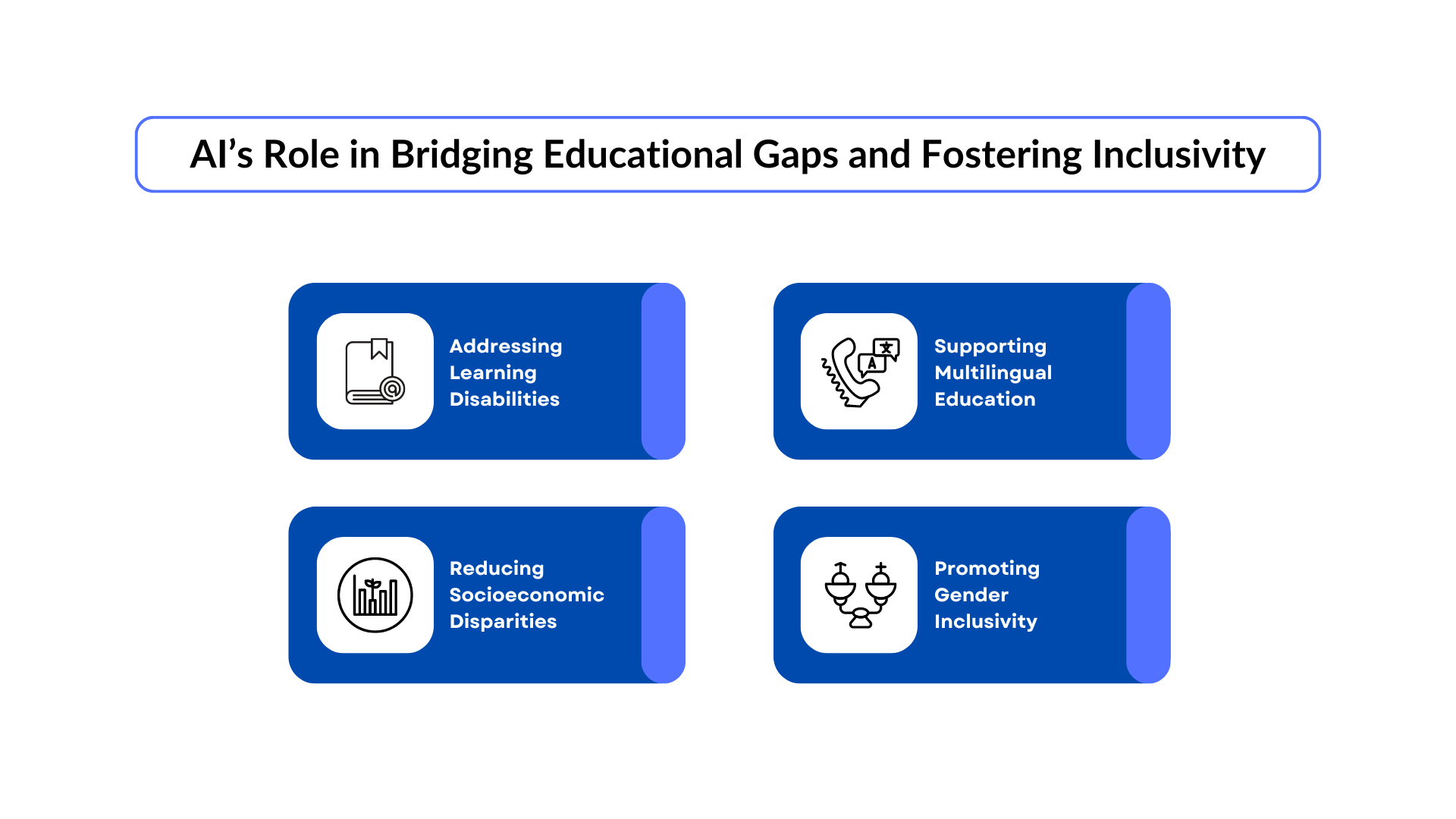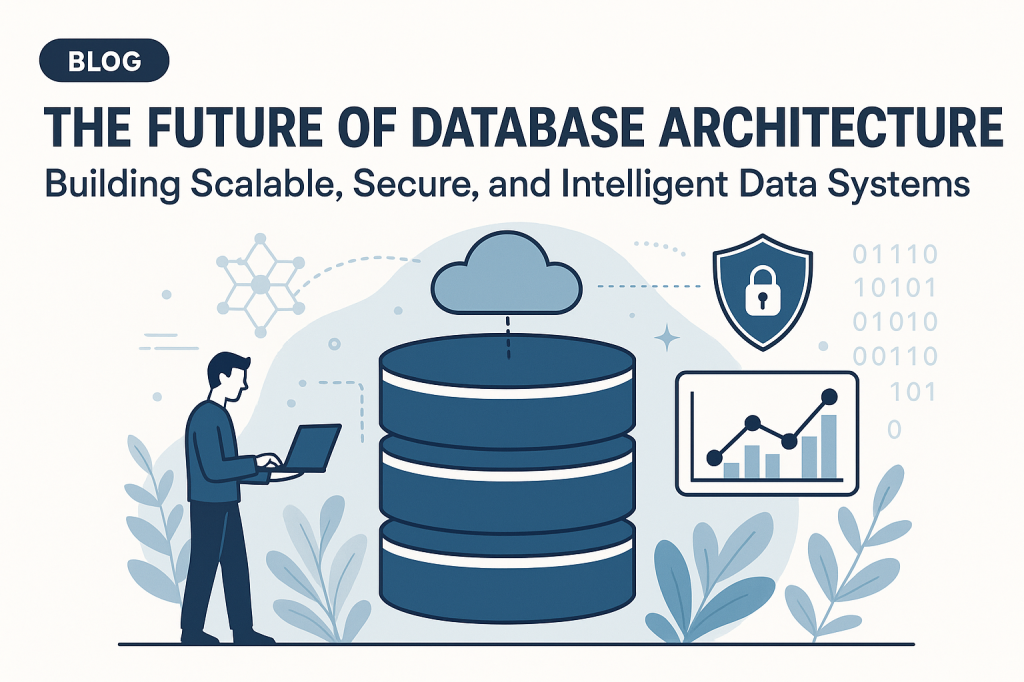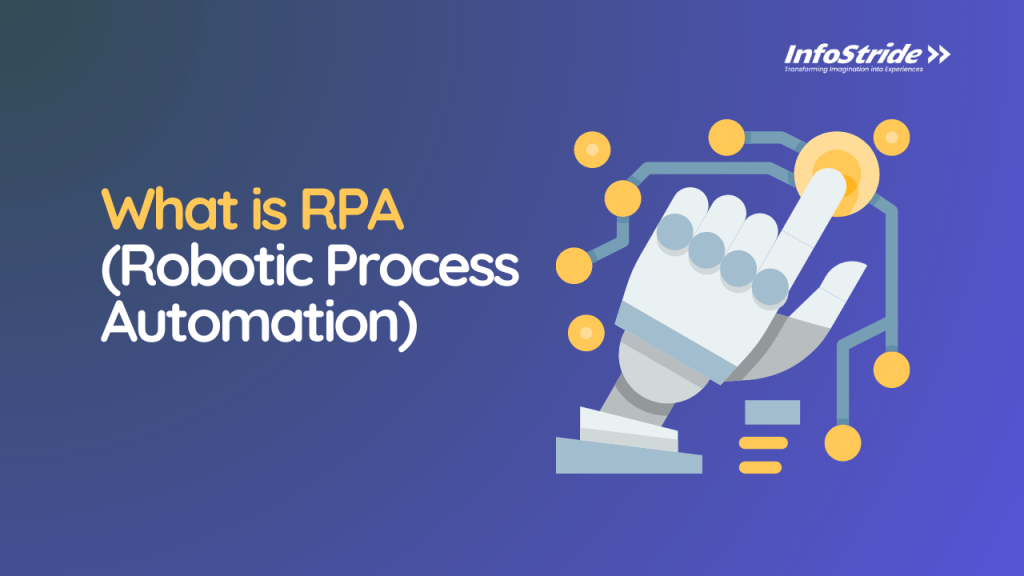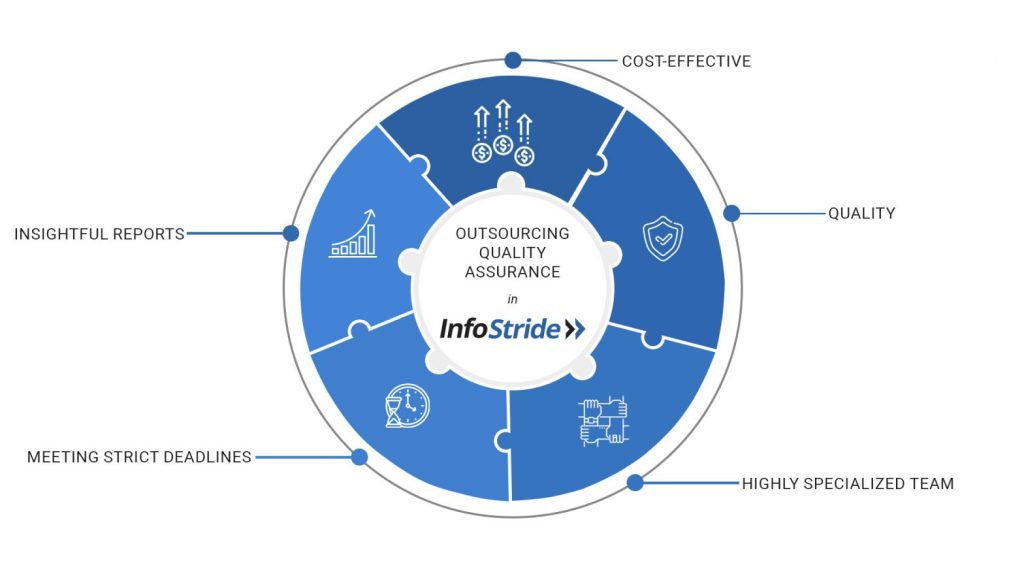Table of Content
AI in Learning and Development
Challenges of Integrating AI in Education
AI’s Role in Bridging Educational Gaps and Fostering Inclusivity
Successful Implementation of AI in Educational Apps
Steps to Create an Educational App With AI Features
Essential Features for an AI-Driven Educational App
Best Practices for Integrating AI in Educational App Development
Artificial Intelligence (AI) has become a transformative force across multiple sectors, from healthcare to finance, driving efficiency, accuracy, and innovation. In 2024, the global AI market is valued at over $184 billion, a testament to its rapid adoption and the vast potential it holds. Industries worldwide are leveraging AI to automate complex tasks, enhance decision-making processes, and deliver personalized experiences, setting the stage for a future where AI is deeply integrated into every facet of our lives.
In the education sector, AI is making significant strides, reshaping traditional learning models and enabling more personalized, accessible, and efficient education systems. By automating administrative tasks, providing tailored learning experiences, and offering intelligent tutoring systems, AI is helping educators and institutions meet the diverse needs of students more effectively. According to recent studies, the AI in education market is projected to reach $20 billion by 2027, reflecting its growing influence and the increasing demand for AI-driven educational solutions.
Understanding the future of AI in education sector is crucial as it holds the potential to address key challenges, such as improving educational outcomes, reducing administrative burdens, and making learning more inclusive. As AI continues to evolve, it’s essential for educators, policymakers, and developers to explore how this technology can be harnessed to create more effective and engaging learning environments.
AI in Learning and Development
1- Enhancing Learning Experiences with AI:
- Adaptive Learning Systems: AI-driven platforms like DreamBox and Smart Sparrow use algorithms to adapt content and pacing based on individual student performance, ensuring that each learner progresses at their own pace.
- Personalized Content Delivery: AI enables the customization of learning materials to suit individual learning styles and needs. For example, platforms like Duolingo use AI to tailor language lessons, providing personalized exercises based on users’ strengths and weaknesses.
- Interactive Virtual Tutors: AI-powered virtual tutors, such as IBM Watson Tutor, provide instant, personalized support to students, answering questions and guiding them through complex concepts.
2- AI’s Role in Developing Tailored Educational Programs:
- Customized Curricula: AI helps educators design customized curricula that align with students’ learning goals and abilities. For instance, the University of Southern California’s Center for Artificial Intelligence in Society developed an AI tool that personalizes educational content to meet the specific needs of underserved communities.
- Real-Time Progress Monitoring: AI enables educators to monitor student progress in real time, adjusting instructional strategies to address learning gaps immediately. This allows for more targeted interventions and support.
- Predictive Analytics for Learning Outcomes: By analyzing historical data, AI can predict student performance and identify at-risk students early, allowing educators to take proactive measures to ensure success.
3- Case Studies of AI Applications in Learning and Development:
- Carnegie Learning’s MATHia Platform: MATHia, an AI-driven math tutoring system, has been shown to improve students’ math skills by adapting to their learning pace and providing personalized feedback. Schools using MATHia reported a significant increase in students’ math proficiency.
- McGraw-Hill’s ALEKS (Assessment and Learning in Knowledge Spaces): ALEKS uses AI to assess students’ knowledge in real-time and deliver personalized learning paths in subjects like math and science. Studies have shown that students using ALEKS achieve higher test scores and better retention of material.
- Coursera’s AI-Powered Learning Tools: Coursera leverages AI to provide personalized course recommendations and adaptive learning experiences. Their AI-driven platform has improved student engagement and completion rates, particularly in large-scale online courses.
Challenges of Integrating AI in Education:
Integrating AI in education comes with both advantages and challenges. While it offers the potential to revolutionize learning through personalization and efficiency, it also raises concerns around cost, data privacy, and equitable access, which must be carefully considered.
- High Implementation Costs: The initial investment in AI technology, infrastructure, and training can be significant, posing a challenge for schools and institutions with limited budgets.
- Data Privacy Concerns: The use of AI in education often involves collecting and analyzing large amounts of student data, raising concerns about data security and privacy.
- Dependence on Technology: Over-reliance on AI tools may lead to a reduction in critical thinking and problem-solving skills, as students may become too dependent on technology for answers.
- Digital Divide: Unequal access to AI-driven educational tools can exacerbate existing disparities, particularly in underserved communities where technology and internet access may be limited.
AI’s Role in Bridging Educational Gaps and Fostering Inclusivity

AI has the potential to significantly bridge educational gaps and foster inclusivity by providing personalized learning experiences and making education more accessible to diverse learners. By addressing disparities in resources, language barriers, and learning abilities, AI can help create a more equitable and inclusive educational environment for all.
- Addressing Learning Disabilities: AI can provide tailored learning experiences for students with disabilities, offering tools like speech recognition, text-to-speech, and personalized learning pathways that accommodate different learning styles and needs.
- Supporting Multilingual Education: AI-powered language translation and interpretation tools can help break down language barriers in education, making learning more accessible to non-native speakers and fostering a more inclusive classroom environment.
- Reducing Socioeconomic Disparities: AI can democratize access to quality education by providing low-cost, scalable solutions that reach students in remote or underserved areas. For example, AI-driven educational apps can deliver high-quality content to students who might not have access to traditional classroom settings.
- Promoting Gender Inclusivity: AI tools can be designed to identify and address gender biases in educational content and practices, ensuring that learning environments are inclusive and equitable for all students.
Successful Implementation of AI in Educational Apps
The advent of AI has revolutionized the educational app development landscape, leading to a surge in AI-powered apps that deliver personalized, efficient, and engaging learning experiences. Companies like Duolingo, Khan Academy, and Coursera have successfully integrated AI into their platforms, offering adaptive learning paths that adjust to each learner’s pace and needs.
Duolingo, for instance, uses AI algorithms to tailor language lessons based on user performance, making the learning experience more personalized and effective. Similarly, Khan Academy employs AI to provide customized learning resources, helping students master concepts at their own pace. Coursera leverages AI to recommend courses and create adaptive learning environments, significantly enhancing user engagement and completion rates.
These examples underscore the growing influence of AI in educational app development, enabling businesses to offer innovative solutions that cater to diverse learning needs. As AI technology continues to advance, the potential for developing more sophisticated, personalized educational apps is vast, opening new opportunities for both learners and developers.
Steps to Create an Educational App With AI Features:

1- Identify the Target Audience and Learning Objectives:
Understand the needs and challenges of your target users (e.g., students, educators) and define the app’s core learning objectives.
2- Choose the Right AI Technologies:
Select AI tools and technologies that align with your app’s goals, such as machine learning algorithms for adaptive learning, natural language processing for virtual tutors, or predictive analytics for performance tracking.
3- Design User-Centric Features:
Focus on creating an intuitive user interface that enhances the learning experience while making AI-driven features accessible and easy to use.
4- Develop the AI Engine:
Build the AI engine that powers the app’s key functionalities, ensuring it can process and analyze data effectively to deliver personalized learning experiences.
5- Integrate Content and AI Features:
Incorporate educational content and AI features such as personalized recommendations, real-time feedback, and progress tracking.
6- Test and Iterate:
Conduct rigorous testing to ensure the AI-driven features function as intended, and gather user feedback to refine and improve the app.
Essential Features for an AI-Driven Educational App
- Adaptive Learning Paths: AI algorithms that adjust content and pacing based on user performance.
- Virtual Tutors: AI-powered chatbots or avatars that provide real-time support and guidance.
- Personalized Content Recommendations: AI systems that suggest relevant materials based on the user’s learning history and preferences.
- Performance Analytics: Tools that track and analyze user progress, offering insights and personalized feedback.
- Gamification Elements: Incorporating AI to create adaptive challenges and rewards, enhancing user engagement.
Best Practices for Integrating AI in Educational App Development:
- Focus on User Privacy and Data Security: Ensure that AI systems comply with data privacy regulations and protect user information.
- Prioritize Accessibility: Design AI features that are accessible to all users, including those with disabilities, to create an inclusive learning environment.
- Continuous Learning and Improvement: Implement machine learning models that can evolve over time, improving the app’s effectiveness based on user interactions.
- Collaborate with Educators: Involve educators in the development process to ensure the AI-driven content and features align with pedagogical best practices.
- Monitor and Evaluate: Regularly assess the AI components to ensure they meet educational goals and provide value to users.
By following these steps and best practices, developers can create AI-powered educational apps that not only enhance learning experiences but also drive meaningful outcomes for users.
Embracing the Future of Education with AI
AI has the transformative potential to revolutionize education by creating personalized, efficient, and engaging learning experiences. From adaptive learning systems that cater to individual needs to AI-driven tools that streamline administrative tasks, the integration of AI in education sector is poised to redefine how we learn and teach. As AI technology continues to advance, the possibilities for further innovation in the education sector are immense, promising more inclusive, accessible, and effective educational environments.
The future of AI in education sector looks bright, with ongoing developments expected to address key challenges such as educational disparities, learning disabilities, and the need for more dynamic, personalized learning experiences. As institutions and educators embrace AI, the potential for improved student outcomes and more efficient educational processes will continue to grow.
To stay ahead in this evolving landscape, it’s crucial to leverage the power of AI in educational app development. Partner with InfoStride to develop cutting-edge, AI-powered educational apps that not only meet the demands of today’s learners but also anticipate the needs of tomorrow. With our expertise in AI and education technology, we can help you create innovative solutions that drive meaningful educational outcomes.
Frequently Asked Questions
1. What factors influence the cost of education app development?
The cost of education app development can vary based on several factors, including the complexity of the app, the features and functionalities required, the platform (iOS, Android, or both), and the level of customization. Additional costs may include ongoing maintenance, updates, and integrations with other systems. For a more accurate estimate, it’s best to consult with a development company that specializes in educational apps.
2. What types of services are included in education app development?
Education app development services typically include project planning, UI/UX design, development of core features, integration of AI technologies, testing, and deployment. Some companies also offer post-launch support, including maintenance, updates, and scaling services to ensure the app remains effective and up-to-date with educational standards.
3. How do I choose the right education app development company?
When selecting an education app development company, consider their experience in developing similar apps, their expertise in AI integration, and their portfolio of completed projects. It’s also important to review client testimonials and seek recommendations. A reputable company will offer a comprehensive development process, from initial consultation to post-launch support.
4. What should I consider when starting educational app development?
When starting educational app development, it’s essential to define your app’s objectives, target audience, and key features. Consider how AI can enhance the learning experience and ensure the app is designed with user engagement in mind. Collaborate with a skilled development team that can guide you through the process and help turn your vision into a functional, effective educational tool.












